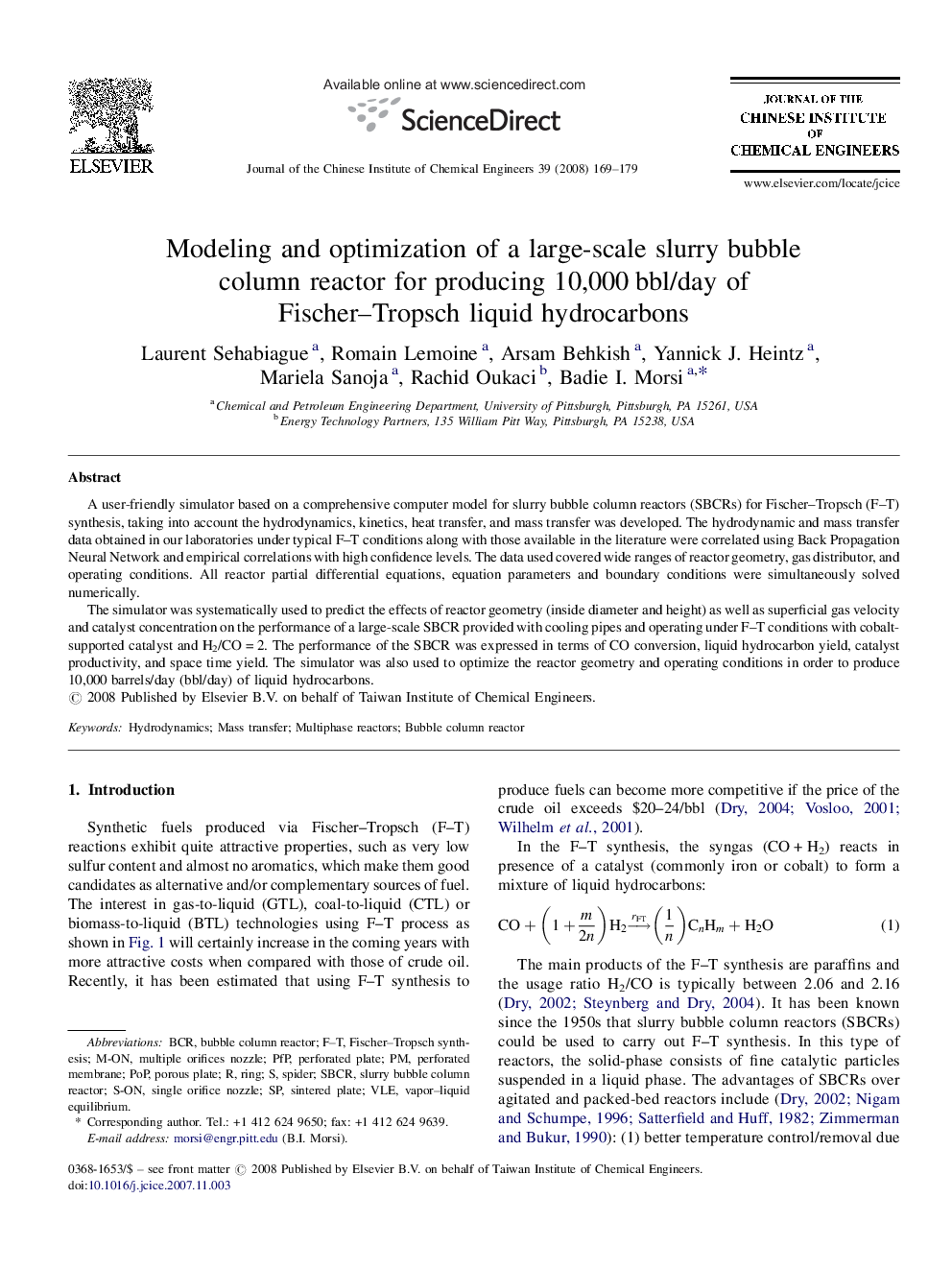| Article ID | Journal | Published Year | Pages | File Type |
|---|---|---|---|---|
| 217643 | Journal of the Chinese Institute of Chemical Engineers | 2008 | 11 Pages |
A user-friendly simulator based on a comprehensive computer model for slurry bubble column reactors (SBCRs) for Fischer–Tropsch (F–T) synthesis, taking into account the hydrodynamics, kinetics, heat transfer, and mass transfer was developed. The hydrodynamic and mass transfer data obtained in our laboratories under typical F–T conditions along with those available in the literature were correlated using Back Propagation Neural Network and empirical correlations with high confidence levels. The data used covered wide ranges of reactor geometry, gas distributor, and operating conditions. All reactor partial differential equations, equation parameters and boundary conditions were simultaneously solved numerically.The simulator was systematically used to predict the effects of reactor geometry (inside diameter and height) as well as superficial gas velocity and catalyst concentration on the performance of a large-scale SBCR provided with cooling pipes and operating under F–T conditions with cobalt-supported catalyst and H2/CO = 2. The performance of the SBCR was expressed in terms of CO conversion, liquid hydrocarbon yield, catalyst productivity, and space time yield. The simulator was also used to optimize the reactor geometry and operating conditions in order to produce 10,000 barrels/day (bbl/day) of liquid hydrocarbons.
